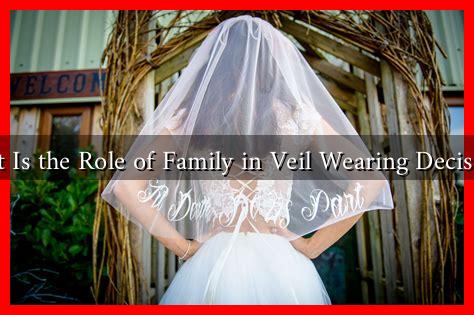-
Table of Contents
What Is the Role of Family in Veil Wearing Decisions?
The decision to wear a veil, whether it be a hijab, niqab, or burqa, is deeply personal and often influenced by a myriad of factors, including cultural, religious, and familial considerations. In many communities, family plays a pivotal role in shaping an individual’s choice regarding veil wearing. This article explores the multifaceted influence of family on veil wearing decisions, examining cultural norms, religious beliefs, and personal autonomy.
The Cultural Context of Veil Wearing
In many cultures, the practice of wearing a veil is steeped in tradition and social expectations. Families often serve as the primary transmitters of these cultural norms. The following points illustrate how family influences veil wearing decisions:
- Tradition and Heritage: In families where veil wearing is a longstanding tradition, younger generations may feel a sense of obligation to continue this practice. For instance, in many Middle Eastern and South Asian families, wearing a hijab is seen as a rite of passage.
- Social Pressure: Family members may exert pressure on individuals to conform to societal expectations. This can be particularly pronounced in tight-knit communities where deviation from norms can lead to social ostracism.
- Role Models: Family members who actively wear veils can serve as role models, influencing younger generations to adopt similar practices. For example, daughters may look up to their mothers or older sisters who wear the hijab as symbols of strength and identity.
Religious Influences on Veil Wearing
Religion is another significant factor that shapes the decision to wear a veil. Families often play a crucial role in imparting religious teachings and values that inform these choices. Key aspects include:
- Religious Education: Families often provide the initial education about religious obligations, including the significance of modesty in Islam. This education can influence whether an individual feels compelled to wear a veil.
- Interpretation of Religious Texts: Different families may interpret religious texts differently. For instance, some families may emphasize the importance of wearing a veil as a sign of piety, while others may adopt a more liberal interpretation that allows for personal choice.
- Community Involvement: Families that are actively involved in religious communities may encourage veil wearing as a means of expressing faith and belonging. This communal aspect can reinforce the decision to wear a veil.
Personal Autonomy and Family Dynamics
While family influences are significant, personal autonomy also plays a crucial role in veil wearing decisions. The dynamics within families can vary widely, leading to different outcomes:
- Supportive Families: In families that prioritize individual choice, members may feel empowered to make their own decisions regarding veil wearing. This can lead to a more diverse range of practices within the same family.
- Conflicted Relationships: In some cases, individuals may experience tension between their desire to wear a veil and their family’s expectations. This conflict can lead to feelings of guilt or rebellion.
- Generational Differences: Younger generations may challenge traditional practices, leading to a shift in family dynamics. For example, a daughter may choose not to wear a veil despite her mother’s insistence, prompting discussions about autonomy and identity.
Case Studies and Statistics
Research indicates that family influence is a significant factor in veil wearing decisions. A study conducted by the Pew Research Center found that 62% of Muslim women who wear the hijab cite family influence as a primary reason for their choice. Additionally, a case study in France revealed that many young women felt torn between their family’s expectations and their personal beliefs about modesty and identity.
Furthermore, a survey conducted in the UK showed that 45% of respondents believed that family pressure played a role in whether women chose to wear a veil, highlighting the complex interplay between personal choice and familial expectations.
Conclusion
The role of family in veil wearing decisions is multifaceted, encompassing cultural traditions, religious beliefs, and personal autonomy. While families can provide support and guidance, they can also impose pressure that complicates individual choices. Understanding this dynamic is essential for fostering respectful dialogue about veil wearing practices. Ultimately, the decision to wear a veil should be a personal one, informed by a combination of familial influence, cultural context, and individual beliefs.
For further reading on the cultural significance of veiling practices, you can explore resources from the Pew Research Center.




